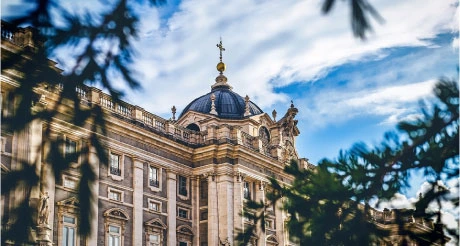
Las 5 salas imprescindibles en tu visita al Palacio Real
You probably didn't know that the Royal Palace of Madrid is the largest palace in Western Europe. It covers an area of 135,000 m², nearly double the size of Buckingham Palace or the Palace of Versailles. Thus, it has plenty of room for the 3,418 rooms found inside. If you don't have time to visit them all, don't worry. We've prepared a selection for you with the 5 rooms you must not miss.
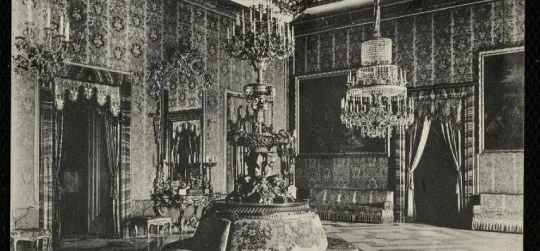
Gasparini Chamber
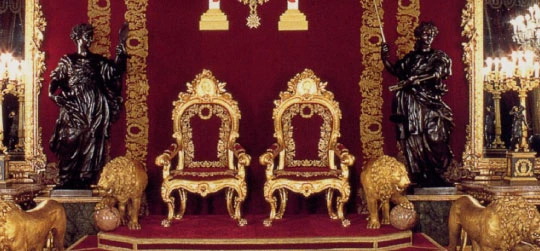
Throne Room
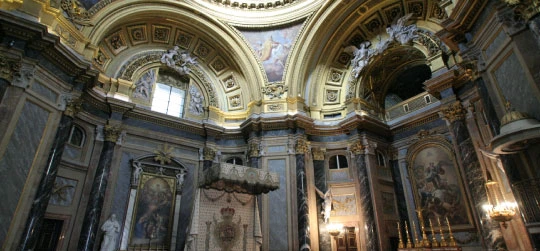
Royal Chapel
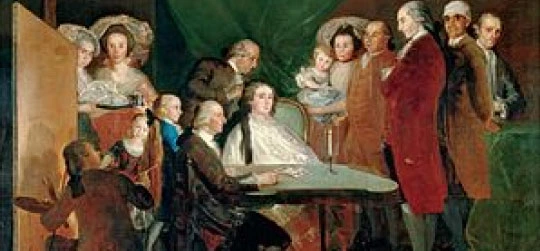
Quarters of Infante don Luis
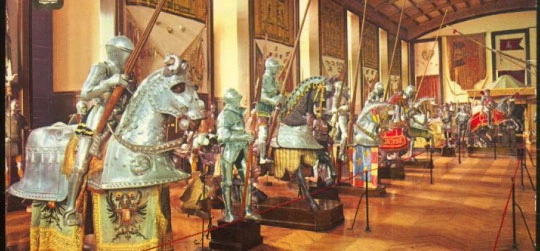
Royal Armoury
Gasparini Chamber
The Gasparini Chamber is one of the most beautiful rooms in the whole Royal Palace and is a favourite amongst our guided tour participants. This is where the king would dress in presence of the Court, in accordance with the customs of the time. It is named for the room's designer, Matías Gasparini, for whom it took approximately 50 years to complete its decoration.
Its style ranges from chinoiserie to rococo; the furnishings, marble flooring and wall tapestries were all designed to go together as a set. Almost everything in terms of the decoration and furnishings is original from the period, with the exception of the silk on the walls, which had to be replaced recently due to its poor state of preservation.
This room features the presence of one of the clocks produced by Pierre Jaquet-Droz for the Court. It is located over the room's fireplace and features automatons dressed in 18th century style that dance to the sound of a shepherd's flute on the hour.
Throne Room
As its name indicates, the Throne Room houses the royal thrones. It is the only room in the Oriente Palace whose function has not changed over the course of history — from its inception in 1737 — and all of its decoration is original to the period.
You cannot miss the Throne Room's spectacular vaulted ceiling, designed by Roberto Michel, the most beautiful one in the Palace. The large fresco is one of the last works of the artist Giambattista Tiepolo and represents the splendour of the Spanish monarchy.
The rest of the decoration is the work of Battista Natali, who designed all the room's embroideries. Natali's decoration and Tiepolo's paintings form one of the great highpoints of the rococo style in Spain.
A final highlight are the sculptures found in this room, which were salvaged from the old Alcázar. Standing out amongst them are Jacques Jonghelinck's series of bronze figures known as the Planets, René Fremín's series of statues the Cardinal Virtues, and Lucca's bronze lions that surround the royal throne, which were brought from Italy along with the Planets by the painter Velázquez.
Royal Chapel
The Royal Chapel was built between the years of 1759 and 1759 by Ventura Rodríguez under order of the monarch Ferdinand VI. It has a classic layout and can be accessed from the gallery that surrounds the central patio.
The decoration was carried out by the painter Corrado Giaquinto, who painted the frescoes in the chapel and the atrium. The organ, built in 1778 by Jordi Bosch i Bernat is considered a masterpiece. The works of artists Ramón Baye and Mengs also stand out.
This room has recently been used by the royal family for funerals, such as those of Juan de Borbón and María de las Mercedes de Borbón. In November of 2000, a ceremony commemorating the 25th anniversary of the proclamation of Juan Carlos I as king of Spain was also held in the chapel.
Quarters of Infante don Luis
Although this space has been occupied sporadically over the course of history, it houses some of the Royal Palace's most interesting pieces. It is named for the prince Luis Antonio de Borbón, who occupied it between 1764 and 1776.
In the first antechamber, known as the Hall of Tableware, you must not miss the fresco by Luis González Velázquez, the china used for the service of the Prince and Princess of Asturias, several different Sévres porcelain pieces, and glassware belonging to King Francisco de Asís, produced at the La Granja Royal Glass Factory.
Next, we find the Chamber of the Infante—where the prince organised recitals and which now serves as a musical instruments room—and the Wallpaper Room, adorned with paper from the Royal Factory.
We conclude the visit with the Angled Office or Chinese-style Dressing Room, which along with the quarters of the princess Mariana Victoria and the Bird Suite, houses the palace's largest collection of paintings. Thus, works from artists such as Juan de Flandes, Van der Weyden, El Bosco, Rubens and Caravaggio are preserved.
Royal Armoury
Finally, your guided tour of the Royal Palace of Madrid would not be complete without visiting the Royal Armoury. It is one of the best in the world, along with Vienna's Imperial Armoury. Although part of the armoury was lost during the War of Independence and the Civil War, some of the world's most important pieces of weaponry are preserved here.
Don't forget to take a good look at the tournament pieces belonging to Charles V and Philip II, crafted by Milan and Augsburg's best master armourers. Standing out among them are the armour and complete set of implements worn by Emperor Charles V in the Battle of Mühlberg, as pictured in the famous equestrian portrait by Tiziano found at the Prado Museum.
